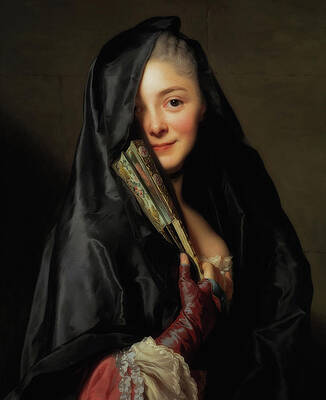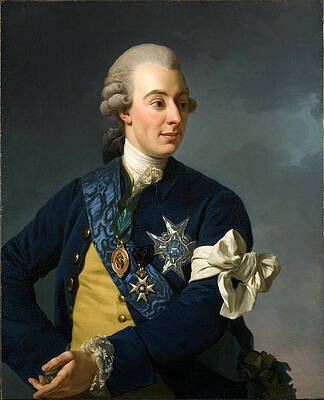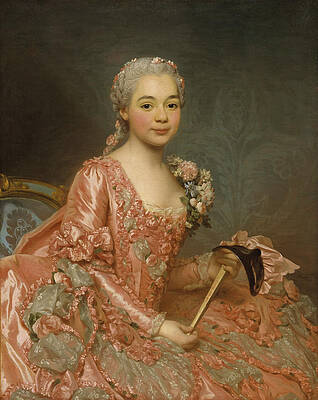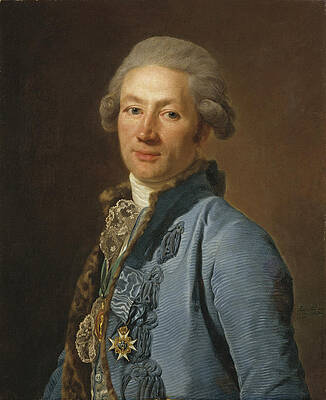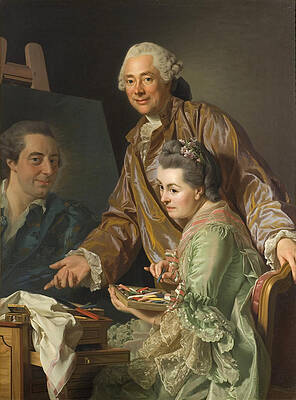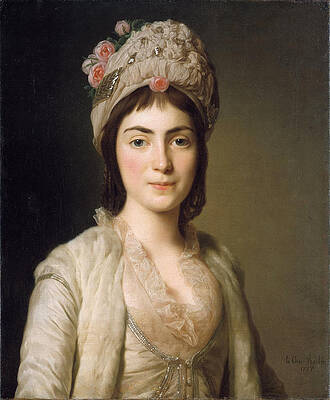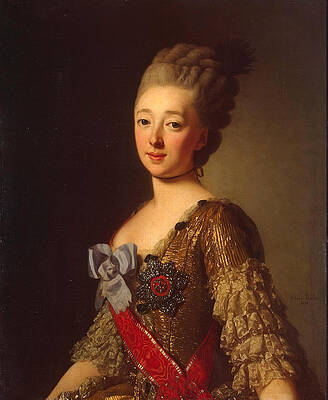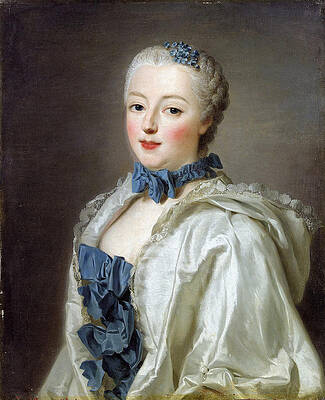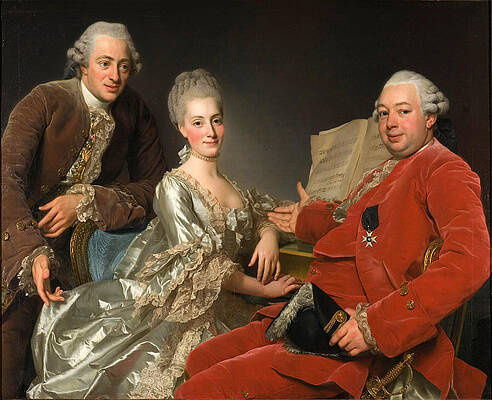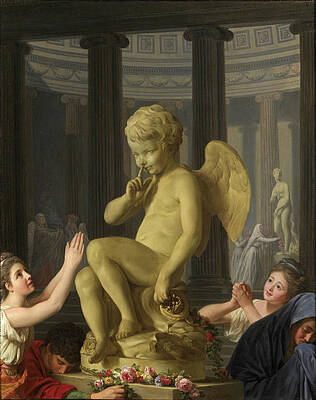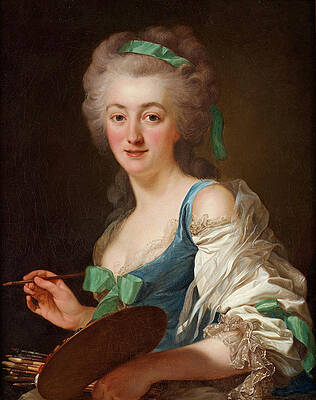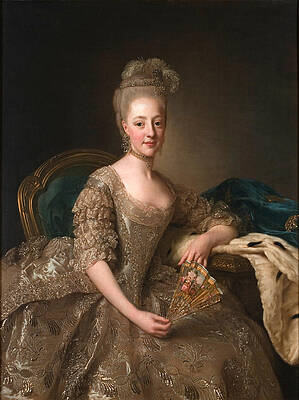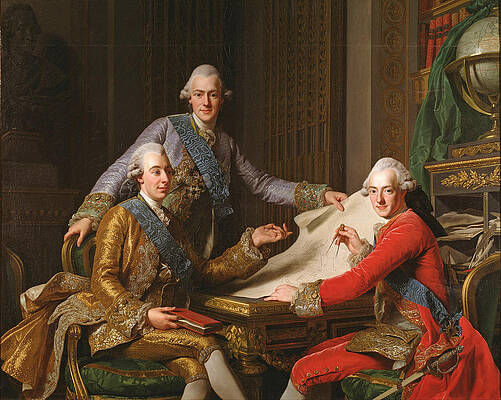Alexander Roslin
The Lady with the Veil. The Artist's Wife
Gustav III with the Armlet of Freedom
Carl von Linne
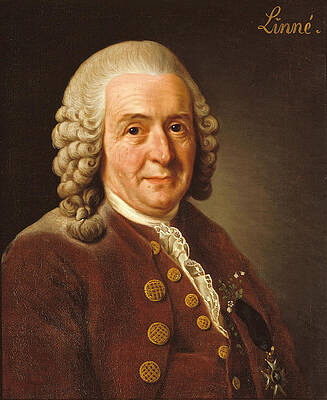
Baroness de Neubourg-Cromiere
Christoffer Bogislaus Zibet
Gustav III King of Sweden in coronation-robes
Self-portrait with his wife Marie-Suzanne Giroust painting the portrait of Henry Wilhelm Peill
Zoie Ghika. Moldavian Princess
Portrait of Grand Duchess Natalia Alexeyevna
Portrait of Ivan Ivanovich Betskoi
Portrait of Farncoise Marguerite de Sevigne Countess of Grignan
The artist Marie Suzanne Giroust
John Jennings Esq. his Brother and Sister-in-Law
Cupid's worship
The French Painter Claude Joseph Vernet
The Painter Anne Vallayer-Coster
Portrait of Hedwig Elizabeth Charlotte of Holstein-Gottorp
Baron Carl Adam Wachtmeister
Ulrik Scheffer
King Gustav III of Sweden and his Brothers


Portrait of Marie-Françoise Julie Constance Filleul, Marquise de Marigny with a book




A portrait of a lady in an ornate blue gown with fur trimmed cape


Cosme De Beaupoil, markis de St Aulaire (1741-1822)
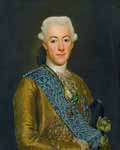


John Jennings Esq. his Brother and Sister-in-Law

King Gustav III of Sweden and his Brothers


Portrait of Grand Duchess Natalia Alexeyevna

Portrait of Prince Vladimir Golitsyn Borisovtj

Portrait of Princess Natalia Petrovna Golitsyn, born Tjernysjev

Portrait of the Countess de Bavière Grosberg



The Comtesse d'Egmont Pignatelli in Spanish Costume



Portrait of Ekaterina Andreevna Ušakova, contessa Černyšëva



Portrait of a man in a red coat



Portrait of Maria Feodorovna (Sophie Dorothea of Württemberg) (1759-1828)



Portrait of Baron Thure Leonard Klinckowström (1735-1821)

Portrait of Marie Romain Hamelin (1734-1798).

Portrait of Marie Jeanne Jeanne Puissant (1745-1828)






Architect Jean Rodolph Perronet with his wife






Countess Françoise Marguerite de Grignan (1646-1705)


Dolgorukov Krymsky Vasily Michailovich






Isabella, Countess of Hertford (1765)




Louis Philippe Duc D'Orléans Saluting His Army on the Battlefield

Luise Ulrike von Preußen, Queen of Sweden






Portrait de Charlotte Boutin, Vicomtesse de Montboissier

Portrait of a gentleman, bust-length, in a grey coat and a red brocade waistcoat

Portrait of a gentleman, bust-length, in a velvet jacket with a green medal-ribbon

Portrait of a Girl holding a Spaniel


Portrait of Archduchess Maria Feodorovna

Portrait of princess Maria Felice Colonna



Hedvig Elisabeth Charlotta av Holstein Gottorp

Hedvig Elisabeth Charlotta av Holstein Gottorp

Anastasia Ivanovna, Countess of Hesse-Homburg, Princess Trubetskaya





Portrait of the Baroness de Neubourg-Cromière



The artist Anne Vallayer Coster

The artist Marie Thérèse Reboul


Charles-Antoine de La Roche-Aymon (1697-1771), French cardinal

Portrait of Pavel Petrovich Romanov (1754-1801)
Fine Art Prints | Greeting Cards | iPhone Cases | Tote Bags | Clothing | Lifestyle | Beach ...
Darl von Linne
Alexander Roslin (often spelled Alexandre in French; 15 July 1718 – 5 July 1793) was a Swedish portrait painter who worked in Scania, Bayreuth, Paris, Italy, and St. Petersburg, primarily for members of aristocratic families. He combined insightful psychological portrayal with a skillful representation of fabrics and jewels.[1][2] In his choice of style and lustrous, shimmering colors Alexander Roslin exemplifies Rococo. He lived in France from 1752 until 1793, a period that spanned most of his career.[3] Rococo artists opted for a more jocular, elegant and ornate style, characterized by lightness, elegance and graceful approach to art and architecture.[4] The painting by Roslin depicting Jeanne Sophie de Vignerot du Plessis, Countess of Egmont Pignatelli, was bought by the Minneapolis Institute of Art in 2006 for US$3 million.[5][6]
Life
Double portrait of Roslin and his wife, 1767
A portrait of Roslin's wife, Marie Suzanne Giroust-Roslin, 1770
Alexander Roslin was born on 15 July 1718, in Malmö, Sweden, the son of naval physician Hans Roslin and Catherine Wertmüller. After showing an unusual talent for drawing and painting, he trained in drawing at Karlskrona under Admiralty Captain Lars Ehrenbill[7] (1697–1747) in order to became a naval draughtsman, and then began to paint miniatures.[8] Stockholm had become an intellectual and artistic center since Queen Christina had established connections with Paris, and Alexander Roslin moved there.[9] At the age of sixteen he became apprenticed to the court painter Georg Engelhard Schröder in Stockholm, studying painting there until 1741 and beginning to paint large portraits in oils.[8] Schröder was influenced by Hyacinthe Rigaud and Nicolas de Largillière.[10] In 1741, Roslin settled in Gothenburg, and the following year moved to Scania, where he remained until 1745 painting portraits[8] and also creating religious paintings for the church at Hasslöv.[10]
In 1745, Roslin left Sweden for Bayreuth, where he had been invited to work for the Margrave of Brandenburg-Kulmbach.[11] In 1747, he moved to Italy to study the works of the great masters. While in Italy he portrayed, among others, the family of Philip, Duke of Parma in 1752. In the same year Roslin moved to Paris, at the age of 34, where he settled for the rest of his life.[8][12] Here, in 1759, he married the pastel painter Marie-Suzanne Giroust (1734–1772).[13] The couple had three sons and three daughters.[12] In 1768 Roslin painted her dressed in Bolognese fashion, Lady with Veil, a portrait that the art critic, writer and philosopher Denis Diderot judged "très piquante".[14][15] In 1767 he painted a double portrait of them both; she is depicted working in pastels on a portrait of Henrik Wilhelm Peill, while Roslin points at a gold box he received from Peill as a present.[16] The frame of the painting is inscribed Loin et près (Far away and yet close), showing that the portrait was a token of friendship.[16] This painting was purchased by the Swedish National Museum in 2013.[17]
Career
In Paris he was a protégé of François Boucher and his work rapidly became fashionable.[18] He was chosen as a member of the French Art Academy,[15] to which his wife also belonged.[8] His early portraits are painted in bright, cool colours, and show the influence of Jean-Marc Nattier and Hyacinthe Rigaud.[19] [20] Around the 1760s he started using daring colouring in his paintings, such as in the portrait of his wife, Lady with Veil (1768), and the Jennings Family (1769).[14]
Roslin had great technical skill in painting the surfaces and texture of precious materials such as fabrics and jewels, but was also adept at capturing his sitters at their best.[12][15] In Paris he soon became one of the foremost portraitists of his time, valued mostly for practiced rendering of luxurious fabrics and gentle complexions: "Satin, skin? Go to Roslin."[13] His portraits of members of the French aristocracy show sensitivity and taste[21] and also psychological insight,[1] although changes in taste might make his faces seem "stiff and lifeless" to some observers today.[11] In 1765 he scored a significant triumph when his portrait of the La Rochefoucauld family, painted in competition with Jean-Baptiste Greuze, was awarded the prize. He also painted several portraits of members of the French royal family and foreign princes, including the Swedish king Gustav III and his brothers.[8] In the second half of the 18th century, having one's portrait painted by Roslin was the highpoint of public esteem.[12] In 1771 Roslin, although a foreigner (often called Roslin le suédois, "Roslin the Swede"[12]), was awarded a pension and a free apartment in the Louvre.[8] The following year he was awarded the Royal Order of Vasa by his native country, after which he was also called Roslin le Chevalier ("Roslin the knight").[12]
He was often surrounded by Swedish visitors to Paris, such as Peill. He was also a good friend of the influential Swedish politician Count Carl Gustaf Tessin.[12] After his wife's death, during the years 1774–75, Roslin visited Sweden, where he had been elected a member of the Royal Swedish Academy of Arts, oddly enough as a foreign honorary member.[8] During the visit, he painted the members of the Swedish royal family, his self-portrait while painting the king, and also portraits of the statesman Carl Fredrik Scheffer and the naturalist Carl Linnaeus.[8]
On his way back to Paris he visited St. Petersburg, where he painted several portraits of Empress Catherine II of Russia and some notable portraits of Russian aristocrats between 1775 and 1777.[22][23] Catherine tried to persuade him to stay in her service, but Roslin declined and returned to France.[8] He died in Paris on 5 July 1793 of natural causes after surviving the French Revolution and outliving many of his patrons;[11] at that time he was the wealthiest artist in Paris.[12]
Works
The Lady with the Veil (The Artist's Wife), 1768, dressed "à la Bolognaise" .[24]
Stylistically, his paintings are Classicist in some respects, but primarily Rococo.[15] The vast majority show members of the European nobility and of leading political and cultural circles. Roslin was enormously successful among members of French high society, becoming one of the wealthiest artists of the era in France.[11] He painted a number of portraits of Russian Imperial statesmen, including images of Ivan Betskoi and his sister Anastasia Ivanovna, and of Ivan Shuvalov. He also painted some notable portraits of Polish and French aristocratic ladies. He signed his works Roslin Suédois. As a member of the Académie royale de peinture et de sculpture Roslin exhibited his paintings at the Salon de Paris, the official exhibition of members' work. Founded in 1725 the Salon became, between 1748 and 1890, the greatest biannual art event in the Western world.[25] From 1753 Roslin exhibited 18 times at the Salon.[26][27]
Roslin's popularity with both his foreign and his Swedish audiences during his lifetime is undisputed. He was one of the foremost portrait painters of his time, widely known for his masterful ability to reproduce his sitters' fashionable garments with their silks, lace, pearls and gold filaments. Roslin's ability to capture the personality of the people he depicted made him popular with his clients and allows us, even today a few hundred years later, to still feel close to the people he painted. He flattered and beautified his subjects according to the Rococo ideal.[2] Roslin's portrait of Anne Vallayer-Coster is praised particularly and became much debated after the Salon. In Le Véridique au Salon, published in 1783, it was described as one that "belonged to the artist's best". The picture has been compared to the contemporary artist Elisabeth Vigée-Lebrun's celebrated self-portrait. Roslin depicted his model in a cool color scale; in green, white, and blue, with the artist's attributes of palette and brushes, a common way for artists to depict themselves. Because of this, Roslin's painting was sometimes misinterpreted by art historians as a self-portrait by Vallayer-Coster.[2]
See also
List of Swedish artists
References
Krol, A. E. (1970). Skandinavskii sbornik 15. cited in "Roslin, Alexander", Great Soviet Encyclopedia, 3rd ed., translation 2010: Tallinn. pp. 219–33. Retrieved 23 February 2014.
Bjurström, Per (1993). Roslin (in Swedish). Höganäs. pp. 56, 163, 168–169, 208, 233. ISBN 9171195556.
Jeffares, Neil. "Dictionary of pastellists before 1800, online edition" (PDF). Retrieved 23 February 2014.
"Rococo style (design) – Britannica Online Encyclopedia". Britannica.com. Retrieved 20 February 2014.
"Alexander Roslin". Antikvärlden (in Swedish). Retrieved 23 February 2014.
Kinsella, Eileen (6 June 2006). "Minneapolis Museum acquires a $3m Roslin portrait". Art News. Retrieved 24 February 2014.
"Adliga ätten Ehrenbill nr 1515", Lars Ehrenbill, Tab. 2 (Swedish)
Herman Hofberg, "Roslin, Alexander", Svenskt biografiskt handlexikon (In Swedish)
Stolpe, Sven (1974). Drottning Kristina. 2, Efter tronavsägelsen. Stockholm: Bonnier. pp. 142 & 145. ISBN 91-0-039241-3.
Roslin, Alexander, Web Gallery of Art, retrieved 17 February 2014.
Bo Gentili, "Alexander Roslin 1718–1793", Kulturarv Malmö, 18 August 2010, retrieved 17 February 2014 (Swedish)
"The Nationalmuseum in Stockholm Presents Alexander Roslin – Sweden's Forgotten Art Icon", ArtDaily, 2007, retrieved 17 February 2014.
"Alexander Roslin", Oxford Dictionary of Art and Artists, cited at Your Paintings, BBC.
"The Lady with the Veil by Alexander Roslin, Nationalmuseum, retrieved 17 February 2014.
Maarten Levendig, "Alexander Roslin: The Lady with the Veil (1768); Nationalmuseum, Stockholm", Rijksmuseum Amsterdam, 23 June 2013.
Didier Rykner, "Two Paintings by Alexandre Roslin for Versailles and Stockholm", The Art Tribune, 6 December 2013.
"Sweden's Nationalmuseum acquires family portrait painted in 1767 by Alexander Roslin", ArtDaily, 2013, retrieved 17 February 2014.
"Alexander Roslin", Bukowskis, retrieved 17 February 2014 (Swedish)
Holkers, Märta (2007). Den svenska målarkonstens historia. Stockholm: Bonnier. p. 88. ISBN 978-91-0-011735-1.
Bjurström, Per (1993). Roslin. Höganäs: Wiken. pp. 30–40. ISBN 978-91-0-011735-1.
Märta Holkers, Den svenska målarkonstens historia, Stockholm: Bonnier, 2007, ISBN 978-91-0-011735-1 (Swedish)
"Roslin, Alexander". Dictionary.com, copied from The Great Soviet Encyclopedia. Retrieved 21 February 2014.
"Portrait of Grand Duchess Maria Feodorovna". royal family.org. Retrieved 24 February 2014.
"alexander-roslin-lady-with-veil-1768". rijksmuseumamsterdam. Retrieved October 2014.
"Paris salons". National Gallery of Austria. Retrieved 21 February 2014.
"Alexander Roslin". Antik. Retrieved 21 February 2014.
"The-Lady-with-the-Veil". www.nationalmuseum.se.
Further reading
Magnus Olausson and Eva-Lena Karlsson (eds.) Alexander Roslin. Exhibition catalog. Nationalmusei utställningskatalog 652. Stockholm: Nationalmuseum, 2007. ISBN 9789171007711
----
Fine Art Prints | Greeting Cards | Phone Cases | Lifestyle | Face Masks | Men's , Women' Apparel | Home Decor | jigsaw puzzles | Notebooks | Tapestries | ...
----
Artist
A - B - C - D - E - F - G - H - I - J - K - L - M -
N - O - P - Q - R - S - T - U - V - W - X - Y - Z
Retrieved from "http://en.wikipedia.org/"
All text is available under the terms of the GNU Free Documentation License


